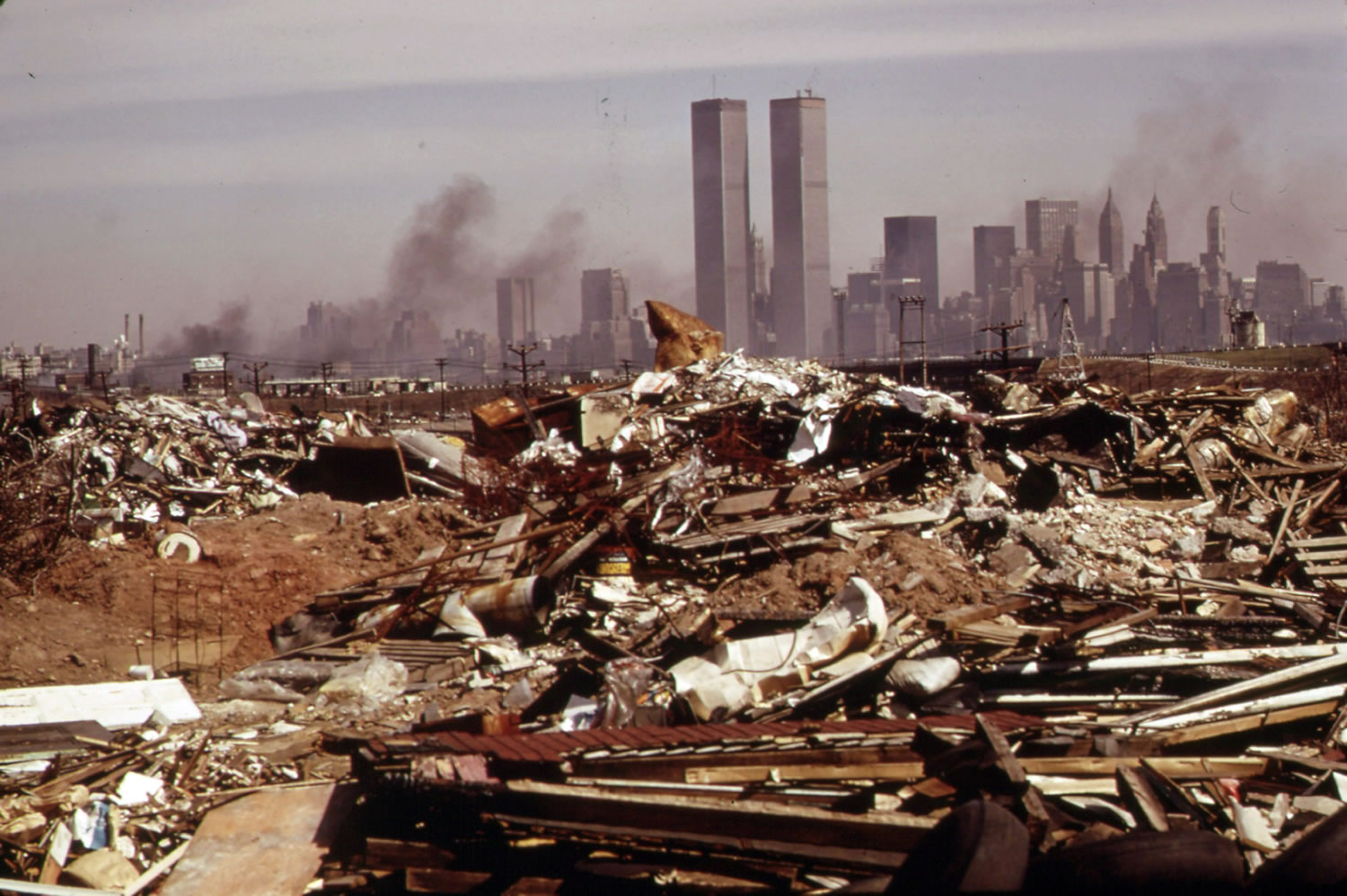WASHINGTON — A polluted drainage ditch that once flowed with industrial waste from Lake Charles, La., petrochemical plants teems with overgrown, wild plants today.
A light-rail line zips past the spot where a now-defunct Portland gasoline station advertised in 1973 that it had run out of gas.
A smoking Jersey City, N.J., dump piled with twisted, rusty metal has disappeared, along with the twin towers of the World Trade Center in lower Manhattan that were its backdrop.
Forty years after the Environmental Protection Agency sent an army of nearly 100 photographers across the country to capture images at the dawn of environmental regulation, The Associated Press went back for Earth Day this year to see how things have changed. It is something the agency never got to do because the Documerica program, as it was called, died in 1978, the victim of budget cuts.
AP photographers returned to more than a dozen of those locations in recent weeks. Of the 20,000 photos in the archive, the AP selected those that focused on environmental issues, rather than the more general shots of everyday life in the 1970s.
Gone are the many obvious signs of pollution — clouds of smoke billowing from industrial chimneys, raw sewage flowing into rivers, garbage strewn over beaches and roadsides — that heightened environmental awareness in the 1970s, and led to the first Earth Day and the EPA’s creation in 1970. Such environmental consciousness caused Congress to pass almost unanimously some of the country’s bedrock environmental laws.
Today’s pollution problems aren’t as easy to see or photograph. Some in industry and politics ask whether the risks are worth addressing, given their costs.
“To a certain extent, we are a victim of our own success,” said William Ruckelshaus, who headed the EPA when it came into existence under Republican President Richard Nixon and was in charge during the Documerica project. “Right now, EPA is under sharp criticism partially because it is not as obvious to people that pollution problems exist and that we need to deal with them.”
Environmental bills that passed Congress so easily in Ruckelshaus’ day are now at the center of partisan disputes. Dozens have been introduced to limit environmental protections that critics say lead to economic harm, and some people question what the vast majority of scientists accept — that the burning of fossil fuels is causing global warming.
In the 1970s, Documerica photographers captured a wave of coal-fired power plant construction. Republicans and the industry now say environmental regulations are partly to blame for shuttering some of the oldest, dirtiest coal plants.
Jim DiPeso of ConservAmerica, a group that recently changed its name from Republicans for Environmental Protection, said, “This time of greater cynicism about government, more economic anxiety and the fact that the problems are not immediately apparent, has created this political problem for EPA.”
EPA chief Lisa Jackson said she believes that people in the United States still want to protect the environment. “There’s a large gulf between the rhetoric inside the Beltway to do everything from cut back on EPA to get rid of the whole place, and what the American people would actually stand for,” she said. “It’s very easy to make rash statements without thinking about what that means to the health of everyday Americans.”
A 2010 Pew Research Center survey showed that 57 percent of those questioned held a favorable view of the EPA, compared with 69 percent in 1997. A CNN/Opinion Research Corp. poll last year found that 71 percent said the government should continue to fund the EPA to enforce regulations to address global warming and other environmental issues.
Images always have spurred environmental consciousness. A 1980s satellite picture of the ozone hole helped lead to a ban on the chemicals in aerosol cans and refrigerants that were responsible. Underwater video of oil spewing into the Gulf of Mexico in 2010 opened the public’s eyes to the gravity of the largest offshore oil spill in U.S. history.
But a second Documerica project, with professional photographers, would be impossible today, given budget cuts and the wariness of industry.
Lyntha Scott Eiler, 65, shot photographs for Documerica in Arizona and Ohio. At the Navajo Generating Station, she got right down in a strip mine “where the shovels were.”
“They weren’t afraid of the EPA, so it was, ‘What else you do you want to get a photograph of?,”’ Eiler said. “You probably would have a hard time doing that today.”



